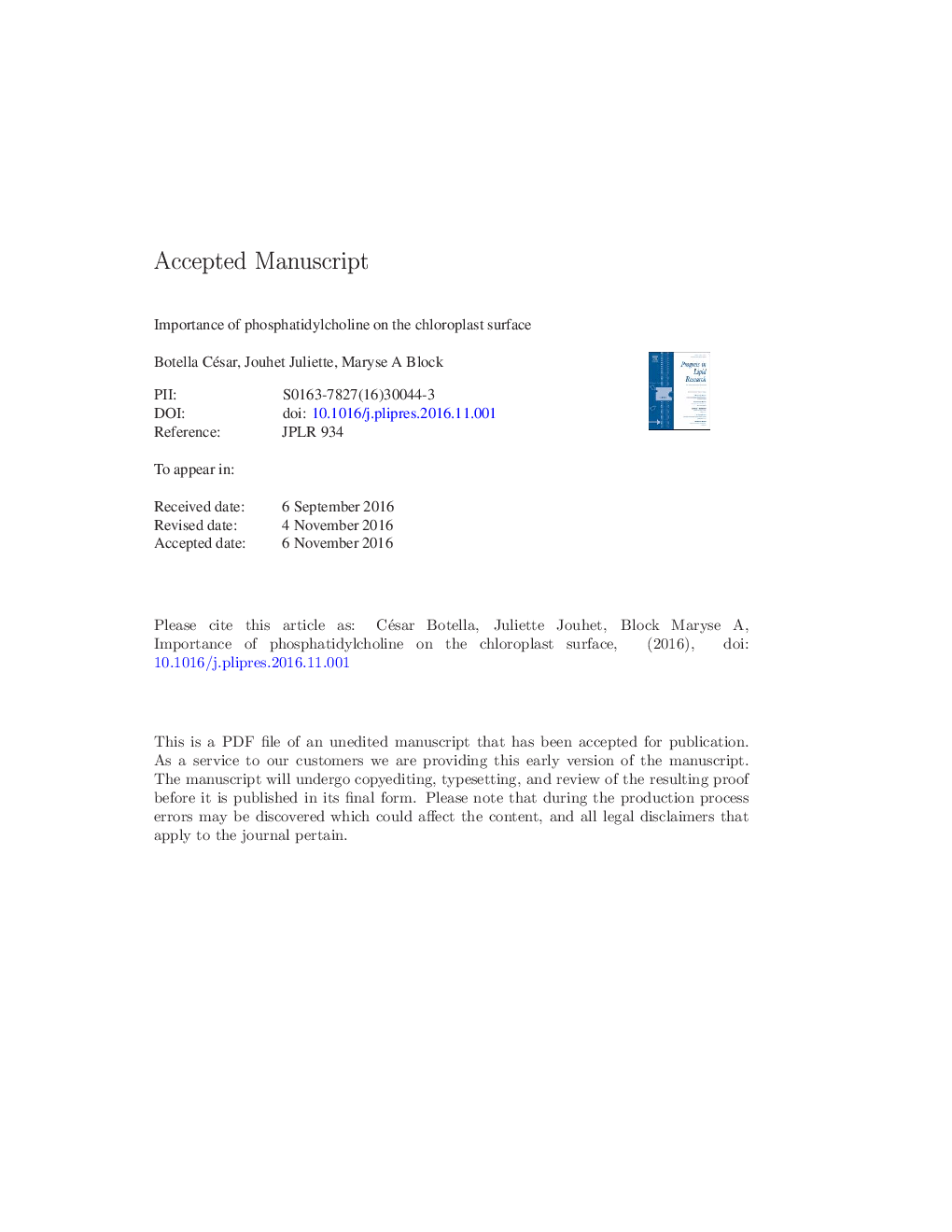| Article ID | Journal | Published Year | Pages | File Type |
|---|---|---|---|---|
| 8358857 | Progress in Lipid Research | 2017 | 44 Pages |
Abstract
In plant cells, phosphatidylcholine (PC) is a major glycerolipid of most membranes but practically lacking from the plastid internal membranes. In chloroplasts, PC is absent from the thylakoids and the inner envelope membrane. It is however the main component of the outer envelope membrane, where it exclusively distributes in the outer monolayer. This unique distribution is likely related with operational compartmentalization of plant lipid metabolism. In this review, we summarize the different mechanisms involved in homeostasis of PC in plant cells. The specific origin of chloroplast PC is examined and the involvement of the P4-ATPase family of phospholipid flippases (ALA) is considered with a special attention to the recently reported effect of the endoplasmic reticulum-localized ALA10 on modification of chloroplast PC desaturation. The different possible roles of chloroplast PC are then discussed and analyzed in consideration of plant physiology.
Keywords
LPAATALAPLCPAPACBPMGDLPCATLACSNBDGPATPAHAAPTALISnitrobenzoxadiazoleP4-ATPasetgDLong chain acyl-CoA synthetasePLMTphospholipid methyltransferasedigalactosyldiacylglycerolPLDCCTDGDGMGDGmonogalactosyldiacylglycerolPLAMCsSDCflippasephosphatidic acidFatty acid desaturaseFADLTPdiacylglycerolDAGmembrane contact siteChloroplastendoplasmic reticulumphosphatidic acid phosphatasephosphatidylcholinephosphatidylethanolaminePhosphatidylserinephospholipase Aphospholipase CPhospholipase DFAXlysophosphatidic acid acyltransferaseMembrane asymmetryAcyl-CoA-binding proteinlipid transfer protein
Related Topics
Life Sciences
Agricultural and Biological Sciences
Food Science
Authors
César Botella, Juliette Jouhet, Maryse A Block,
